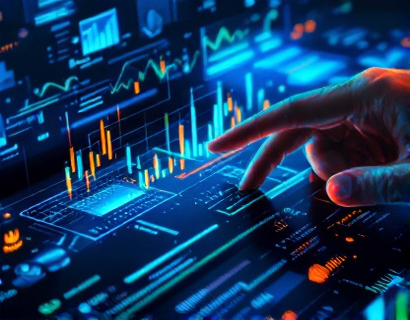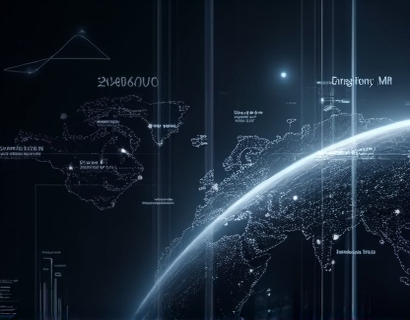Maximizing Aquaponics Business Success with Advanced Management Software
In the rapidly evolving world of sustainable agriculture, aquaponics stands out as a promising method that combines fish farming and hydroponic plant cultivation in a symbiotic environment. For aquaponics businesses, achieving success involves not only understanding the intricate balance between fish and plant systems but also implementing efficient management practices. Advanced management software plays a crucial role in streamlining operations, boosting productivity, and enhancing sustainability. This article delves into how such software can transform aquaponics farming, providing tools for precise monitoring and control, and ensuring optimal conditions for both fish and plants while minimizing environmental impact.
Understanding the Importance of Management Software in Aquaponics
Aquaponics systems are complex and require constant monitoring to maintain the delicate balance of water quality, nutrient levels, and environmental conditions. Traditional methods of managing these systems can be time-consuming and prone to human error. Advanced management software addresses these challenges by offering a comprehensive suite of tools designed to optimize every aspect of aquaponics farming. These tools enable farmers to monitor and control various parameters in real-time, ensuring that the system operates efficiently and sustainably.
Real-Time Monitoring and Control
One of the key features of advanced management software is real-time monitoring and control. This capability allows farmers to track critical parameters such as water temperature, pH levels, dissolved oxygen, and nutrient concentrations continuously. By having access to this data in real-time, farmers can make informed decisions quickly, adjusting conditions as needed to maintain optimal environments for fish and plants. For instance, if the pH level drops below the desired range, the system can automatically trigger a correction, preventing potential harm to the aquatic life.
Moreover, real-time monitoring helps in early detection of issues such as disease outbreaks or equipment failures. This proactive approach minimizes downtime and reduces the risk of significant losses. The software can send alerts to the farmer's mobile device or computer, ensuring that any anomalies are addressed promptly. This level of control not only enhances the health and productivity of the aquaponics system but also contributes to the overall sustainability of the operation by reducing waste and resource consumption.
Automation and Integration
Automation is another critical aspect of advanced management software in aquaponics. Automated systems can control feeding schedules, water circulation, and lighting based on predefined parameters and real-time data. For example, the software can adjust the feeding rate based on the growth stage of the fish and the biofilter's performance, ensuring that nutrients are used efficiently and waste is minimized. Similarly, automated water circulation systems can maintain optimal oxygen levels and prevent stagnation, which is crucial for the health of both fish and plants.
Integration with existing hardware and third-party services further enhances the functionality of the software. Compatibility with sensors, pumps, and other equipment ensures a seamless operation, reducing the need for manual interventions. Integration with weather forecasts and environmental data can also help in making proactive adjustments to the system, such as preparing for temperature fluctuations or adjusting nutrient dosing based on seasonal changes.
Enhancing Productivity Through Data Analytics
Data analytics is a powerful tool that advanced management software brings to aquaponics farming. By collecting and analyzing data over time, farmers can gain insights into the performance of their systems and identify areas for improvement. For instance, analyzing growth rates, feed conversion ratios, and yield data can help optimize feeding strategies and breeding programs. These insights can lead to higher productivity and better resource utilization, ultimately increasing the profitability of the business.
Moreover, data analytics can support decision-making in expanding or modifying the aquaponics operation. By understanding trends and patterns, farmers can make informed decisions about scaling up, introducing new species, or adjusting the ratio of fish to plants. This data-driven approach ensures that expansions and modifications are based on solid evidence, reducing the risk of costly mistakes.
Sustainability and Environmental Impact
Sustainability is a core principle of aquaponics, and advanced management software plays a vital role in achieving this goal. By optimizing resource use and minimizing waste, the software helps reduce the environmental footprint of aquaponics operations. For example, precise control of nutrient dosing ensures that excess nutrients are not released into the environment, preventing water pollution. Similarly, efficient water use through recirculating systems and automated adjustments based on real-time data helps conserve this precious resource.
Advanced management software can also assist in tracking and reporting on sustainability metrics, which is increasingly important for businesses looking to meet certification standards or appeal to environmentally conscious consumers. By providing detailed reports on energy consumption, water usage, and waste management, the software helps farmers demonstrate their commitment to sustainability, enhancing their reputation and market position.
User-Friendly Interfaces and Accessibility
For the software to be truly effective, it must be user-friendly and accessible to farmers of all technical backgrounds. A well-designed interface ensures that farmers can easily navigate the various features and functions of the software, even if they have limited experience with technology. Intuitive dashboards that display key metrics at a glance allow farmers to monitor the health of their systems quickly and make informed decisions.
Additionally, the software should be accessible via multiple devices, including smartphones and tablets, enabling farmers to manage their operations on-the-go. This flexibility is particularly valuable for large-scale operations where multiple locations need to be monitored and controlled remotely. By providing a seamless user experience, the software encourages consistent use and adoption, leading to better overall management of the aquaponics system.
Training and Support
To fully leverage the benefits of advanced management software, farmers need proper training and support. Comprehensive training programs that cover the installation, configuration, and daily use of the software are essential. These programs should be tailored to different user levels, from beginners to advanced users, ensuring that all farmers can maximize the software's potential.
Ongoing support is equally important, as farmers may encounter issues or have questions about specific features. A responsive customer support team can provide assistance, troubleshoot problems, and offer best practices for optimizing the software's use. Regular updates and improvements based on user feedback further enhance the software's effectiveness and user satisfaction.
Case Studies and Success Stories
To illustrate the real-world impact of advanced management software in aquaponics, consider a few success stories. One example is a mid-sized aquaponics farm that implemented a comprehensive management system to monitor and control their operations. Within six months, the farm saw a 20% increase in fish yield and a 15% reduction in energy consumption. The precise control of water parameters and automated feeding schedules contributed to healthier fish and more robust plant growth.
Another case involves a small-scale urban aquaponics operation that used the software to optimize space and resource use. By integrating the system with climate control and lighting, the farmer was able to grow a diverse range of crops year-round, despite the challenging urban environment. The software's data analytics features helped the farmer identify the most profitable crop combinations, leading to increased revenue and customer satisfaction.
Community and Collaboration
The adoption of advanced management software in aquaponics is not just about individual success; it also fosters a sense of community and collaboration among farmers. Online platforms and forums where users can share experiences, tips, and best practices create a supportive network. This community aspect encourages knowledge sharing and innovation, driving the entire industry forward.
Collaborative projects and research initiatives can also benefit from the data and insights generated by management software. By pooling data from multiple farms, researchers can conduct large-scale studies to improve aquaponics practices and develop new technologies. This collective approach accelerates progress and helps overcome common challenges faced by the industry.
Conclusion
Advanced management software is a game-changer for aquaponics businesses, offering a range of benefits that enhance operations, productivity, and sustainability. From real-time monitoring and automation to data analytics and user-friendly interfaces, these tools empower farmers to manage their systems more effectively and efficiently. By embracing this technology, aquaponics businesses can not only improve their bottom line but also contribute to a more sustainable future for agriculture.
As the demand for sustainable food production continues to grow, the role of advanced management software in aquaponics will become increasingly important. By investing in these solutions, farmers can stay ahead of the curve, ensuring their operations are resilient, profitable, and environmentally responsible. The future of aquaponics is bright, and advanced management software is a key component of that success.










































